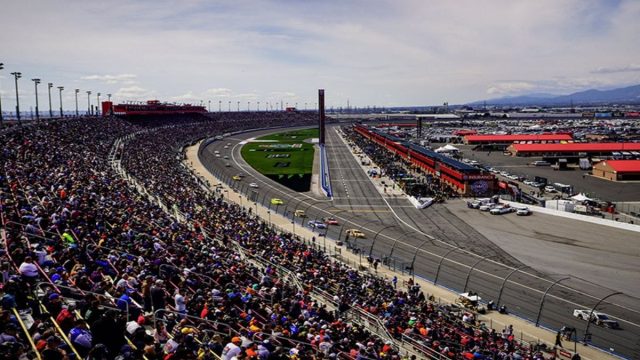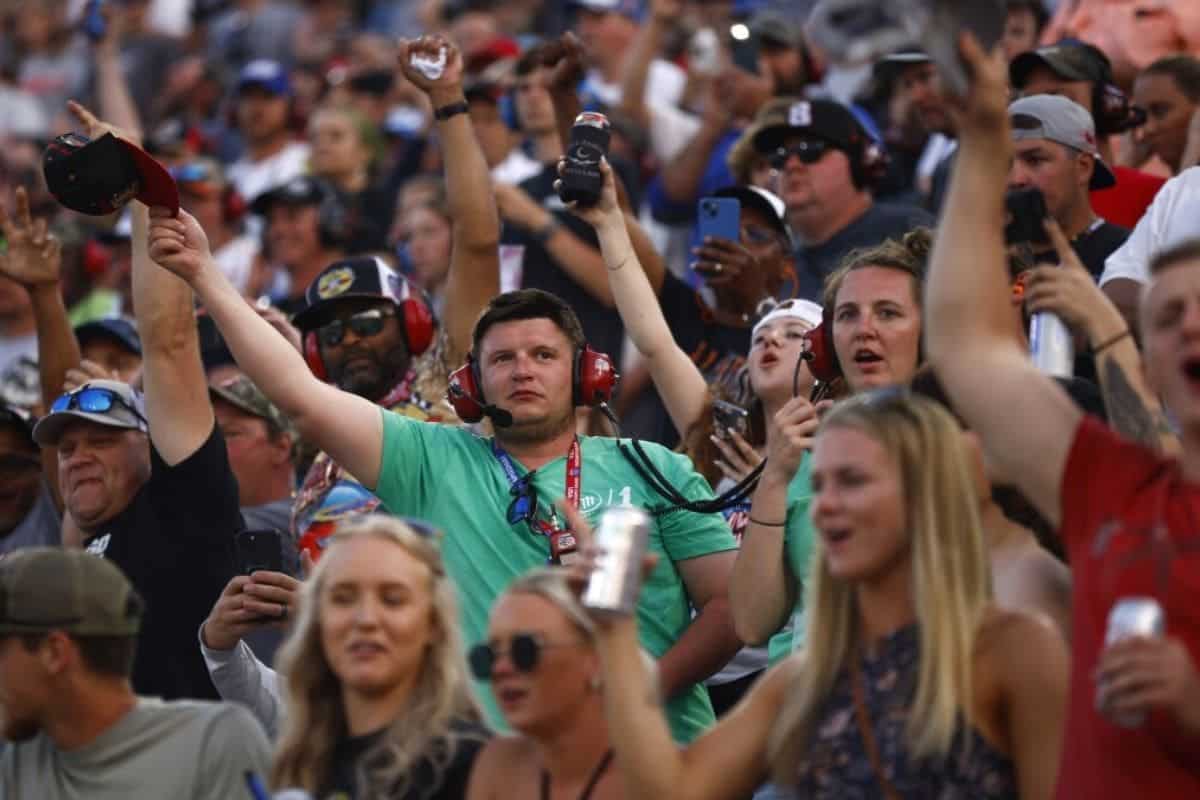Auto Club Speedway Revamp: The recent proposal to revamp Auto Club Speedway has ignited a polarized debate among fans, with opinions sharply divided over the new design, which some describe as ‘depressing.’ Proponents argue that the changes promise improved racing dynamics and greater fan engagement, while detractors fear the erosion of the venue’s historic charm and identity. This discourse highlights the inherent tension between modernization and tradition in motorsports. As stakeholders grapple with these conflicting perspectives, one must consider the broader implications for the future of racing and the legacy of iconic tracks like Auto Club Speedway.
Key Highlights
- Fans express mixed feelings about the revamp, with some calling the new look ‘depressing’ while others support modernization for improved racing.
- The proposed half-mile layout aims to enhance competitive racing and align with NASCAR’s shift towards short-track formats.
- Concerns arise over losing Auto Club Speedway’s historic charm, which has been a significant part of its identity since opening in 1997.
- Social media serves as a platform for fan discussions, highlighting the divide between those favoring competition and those valuing tradition.
Historical Context of Auto Club Speedway
The historical context of Auto Club Speedway reflects its evolution from a premier NASCAR venue into a cultural landmark, highlighting both the sport’s growth in California and its intersection with popular media. Opened in 1997, the speedway quickly established itself as a cornerstone in the NASCAR calendar, attracting considerable attention and fostering a dedicated fanbase. Its 2-mile D-shaped configuration offered unique racing dynamics, allowing legendary drivers to demonstrate their skills in competitions.
Beyond its racing pedigree, Auto Club Speedway became a backdrop for Hollywood productions, exemplifying the blending of motorsport and popular culture. Films such as ‘Charlie’s Angels’ and ‘Herbie: Fully Loaded’ utilized the venue to capture the excitement of racing while further embedding the speedway in the collective consciousness of both fans and moviegoers. This dual identity as a sporting and cinematic venue emphasized the speedway’s importance within the socio-cultural landscape of California.
The speedway’s contributions to NASCAR’s expansion in the West cannot be overlooked. By hosting crucial races, it played a critical role in broadening the sport’s appeal beyond its traditional Southern roots.
However, as it shifts to a high-banked short track, the narrative of Auto Club Speedway faces a notable change. This metamorphosis raises questions about its future identity and the legacy it will leave behind, as fans grapple with the implications of these changes on both the sport and its cultural relevance.
Plans for Reconfiguration and Fan Reactions
Plans to reconfigure Auto Club Speedway into a high-banked short track have generated mixed reactions among fans, many of whom cherish the venue’s storied past and its significance in NASCAR history.
The proposed changes, which include demolishing parts of the iconic track to create a new half-mile layout, evoke a sense of nostalgia for a venue that once hosted two NASCAR weekends annually. The existing configuration, characterized by wide, sweeping turns, has facilitated thrilling races and dramatic finishes, fostering unforgettable moments in motorsport.
With a grandstand capacity of 68,000 and a total capacity of 122,000, Auto Club has long been a gathering place for fans enthusiastic to witness historic events, such as Jeff Gordon’s inaugural victory at the California 500 and Jimmie Johnson’s impressive six wins at the Auto Club 400. These memories amplify the emotional stakes surrounding the reconfiguration, as many supporters view the track as akin to a beloved friend being altered beyond recognition.
Looks like they changed the layout for Fontana looks more like a short version of New Hampshire but with high banks. Logistics center is expected to finish by 2025. Nothing official coming from @nascar on updates of when the track will be completed. #NASCAR pic.twitter.com/TVbTYftz7C
— Steven Nava (@stevennava_) July 27, 2024
The sentiment among fans is polarized; while some see the potential for exciting racing dynamics inherent in a short track, others lament the loss of the classic style synonymous with NASCAR’s roots. This change has sparked concerns about whether the new design will honor the legacy of the original venue or diminish its historical significance.
As the plans progress, the conversation surrounding Auto Club Speedway will likely continue to reflect the tension between innovation and tradition, a central theme in the evolution of motorsport.
NASCAR’s Motivation and Broader Trends
NASCAR frequently seeks to improve its competitive landscape by focusing on short-track racing, a tactic that corresponds with the introduction of the Next Gen car and the anticipated reconfiguration of Auto Club Speedway. This approach aims to augment the on-track product, allowing for more dynamic racing experiences that resonate with fans and spectators similarly. The shift towards short tracks is indicative of a broader trend in professional sports, where venues are increasingly being modernized to boost the spectator experience and foster a more engaging atmosphere.
The reconfiguration of Auto Club Speedway reflects NASCAR‘s commitment to adapting its facilities to contemporary standards. As seen in other Southern California sporting venues, renovations often prioritize fan comfort and engagement, thereby fostering a deeper connection between the audience and the event. This transformation is not merely cosmetic; it is a calculated move to revitalize the sport and correspond with evolving fan expectations.
Furthermore, the introduction of the Next Gen car complements this tactic by promoting closer competition and more exciting racing. With improved aerodynamics and a focus on driver skill, the Next Gen car is designed to improve the racing product, making short-track events more appealing.
Fan Reactions to the Transformation
Mixed reactions from fans have emerged regarding the transformation of Auto Club Speedway, emphasizing a divide between those enthusiastic for a more competitive racing environment and others apprehensive about losing the venue’s historic charm.
As construction progresses, many NASCAR fans have taken to social media to express their views, revealing a spectrum of emotions surrounding the revamp.
Supporters of the transformation argue that a new short-track configuration could improve the racing experience by fostering closer competition and increasing overtaking opportunities. They maintain that this shift aligns with broader trends in NASCAR, where excitement and fan engagement are paramount.
“1 mile high banked? Sign me up. I don’t give a s*** what’s around it!” – fans’ reaction
However, a considerable faction of fans voices concerns about the aesthetic and emotional impact of the changes. Key points of disagreement include:
- Loss of Historic Identity: Many fans feel that the changes may strip the venue of its unique character, diminishing its legacy.
- Proximity to Industrial Areas: Concerns have arisen about the new layout being overshadowed by nearby warehouses, detracting from the complete ambiance.
- Potential for Diminished Fan Experience: Some speculate that the revamped speedway may not deliver the same thrilling atmosphere that characterized past events.
- Mixed Expectations for Competitive Racing: While some anticipate more intense racing, others worry that the alterations might not achieve the desired competitive edge.
Additional Fan Opinions and Concerns
Amid the ongoing transformation of Auto Club Speedway, fans continue to voice a range of opinions and concerns, reflecting their investment in the future direction of this historic venue. While some fans express enthusiasm about the proposed one-mile high-banked layout, others lament the potential loss of charm associated with the track’s new surroundings, now characterized by warehouses. The juxtaposition of racing excitement against an industrial backdrop raises questions about the venue’s atmosphere and appeal.
“That is going to be a depressing venue squeezed in between all those warehouses.”
“Does anyone know when this was released or rendered? Because Auto Club is not the sponsor of the “track” “project” or speedway anymore. Remember it’s “next gen california” now…” – fans reaction
Skepticism regarding the project’s timeline is prevalent, with fans demanding tangible evidence before believing in the promised changes. One fan articulated this sentiment succinctly, stating, “I’m not believing this until I see shovels to dirt.” This apprehension highlights a broader concern about the reliability of project timelines, especially given the historical context of delays in similar initiatives.
Additionally, confusion over the design specifications amplifies uncertainty. The low-resolution images presented have led to skepticism about their accuracy, with fans questioning the feasibility of discerning track characteristics from such representations. Comments pointing out the inadequacy of visual information emphasize a desire for clarity in communication from the organizers.
News in Brief: Auto Club Speedway Revamp
The proposed revamp of Auto Club Speedway exemplifies the ongoing tension between modernization and tradition within motorsports.
While some fans welcome improvements aimed at enhancing racing dynamics and engagement, others express concern over the potential loss of the venue’s historic charm.
This division highlights the complexities involved in evolving iconic tracks to meet contemporary expectations while preserving their unique character.
Ultimately, the outcome of this transformation will greatly influence the future identity of Auto Club Speedway in the racing community.
ALSO READ: Auto Club Speedway Transformation: The End of an Era and the Birth of a New Vision



